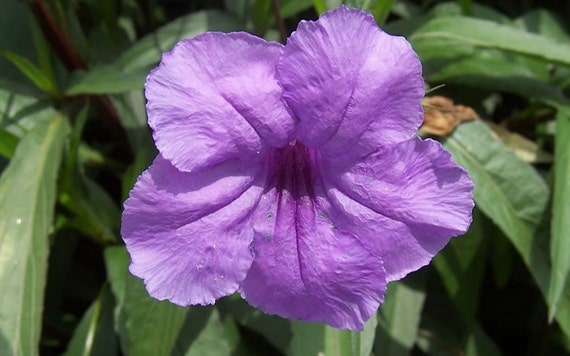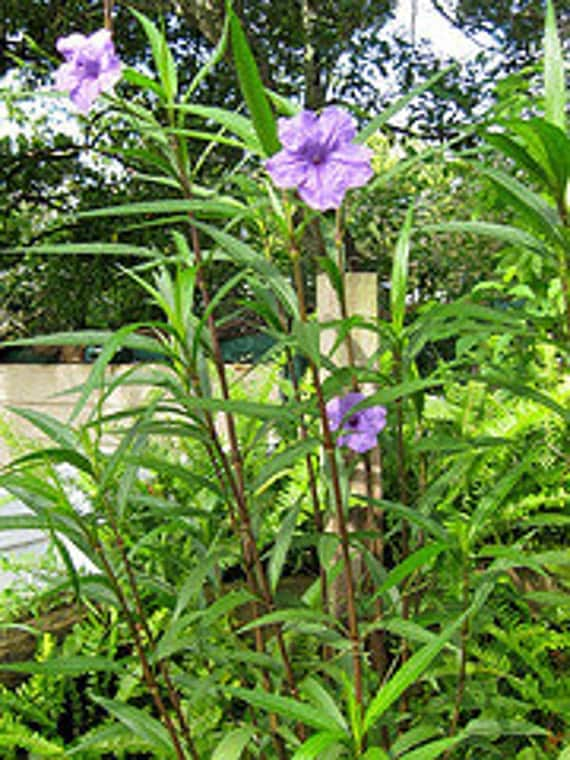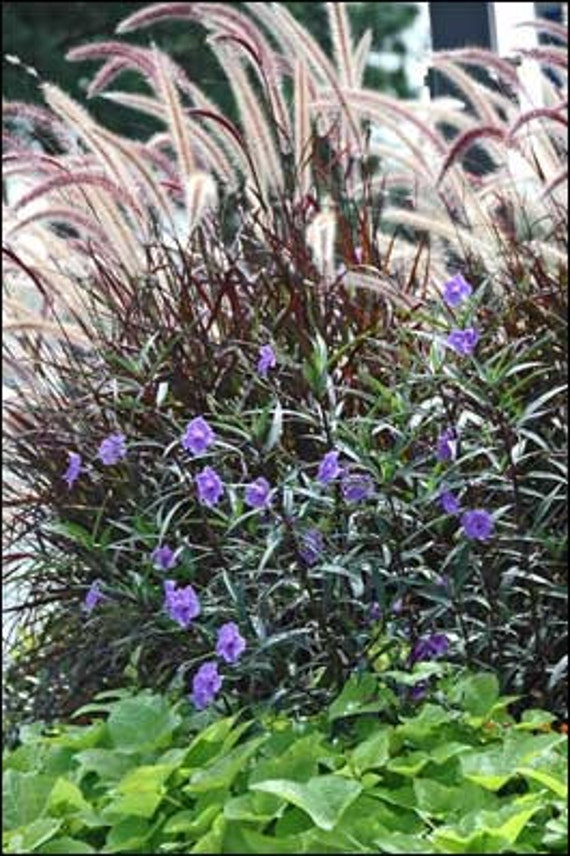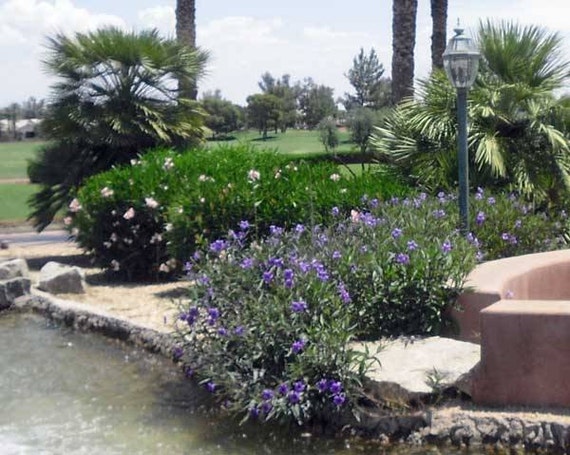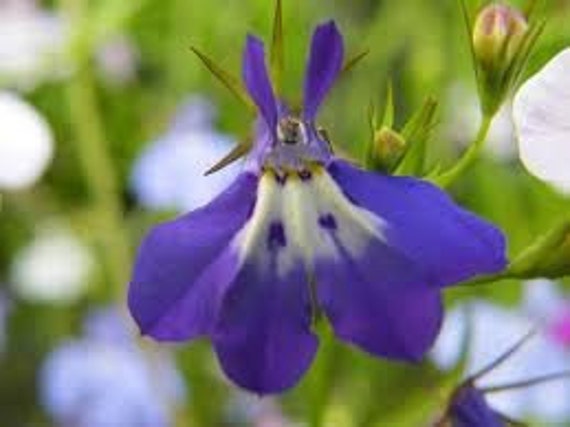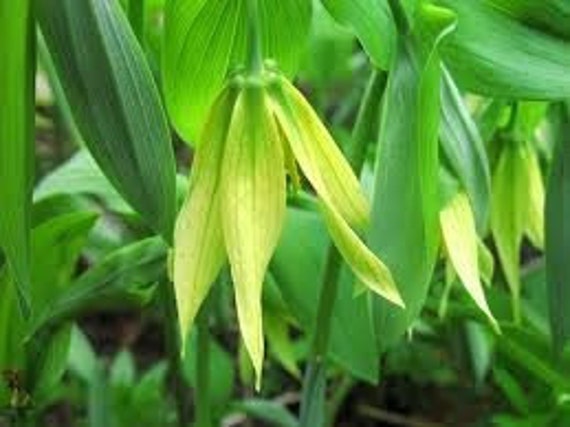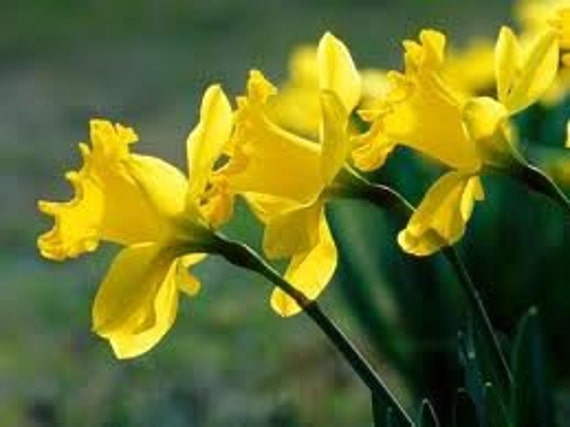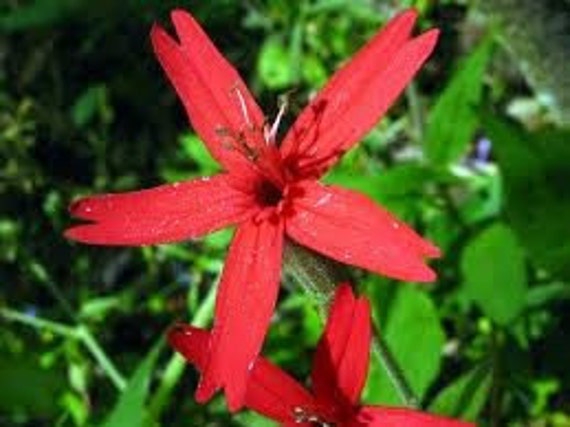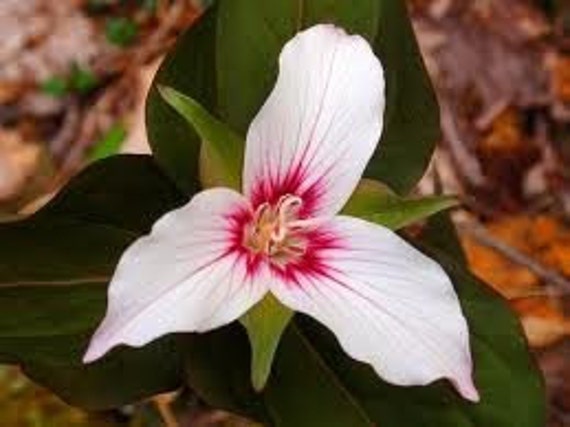Wednesday, May 15, 2013
Mexican petunia or ruellia One Young Plant - grows Purple Flowers propagates easily low maintenance
One Quality Young Plant
Visit our shop for more Freshness!!! Lemongrass, Prickly Pear Cactus, Cuban Oregano....
Tuesday, May 7, 2013
Cuban Oregano leaves - Queen of Herbs, Broadleaf Thyme, Mexican Thyme, Spanish Thyme, Indian Borage, French Oregano
5 Cuban Oregano Leaves Fresh From South Florida
Other common names: Broadleaf Thyme, Mexican Thyme, Spanish Thyme, Indian borage
"Queen of Herbs" "Three-in-one Herb" "Mother of Herbs"
We are a Certified Licensed Nursery in South Florida
~Our Specialty is Cuban Oregano~
According to "The Herbalist in the Kitchen"...
Culinary Uses
The fresh leaves are used to season fish and cabrito (young goat) in the islands. They are sometimes chopped in chile pastes (something like Jerk Seasoning, but without the strong Onion and Ginger presence). The leaves are the primary seasoning in the Cuban black bean soup, Frijoles Negros. A kind of salsa, made by mincing the leaves together with various unripe fruits, is served as an accompaniment to rice.
In Java and Malaysia, it is used in curries -- especially with goat or strong-smelling fish.
The leaves are sometimes used to flavor beers and wines in India. They have been brewed as herbal tea, and been cooked as potherbs.
Roots and young plants (Coleus amboinicus) eaten in South America. The fragrant leaves are eaten as potherbs in India
The roots of Coleus barbatus are pickled in India.
Visit artVine Nursery South Florida
Perennial Spring Flowers Lot of 10 Plus Get 5 Free Blue Flag Iris, Bellwort, Yellow Daffodil, Firepink Catchfly, Painted Trillium
Package of 10 Plants *Plus Get 5 Free*
You will receive 15 plants of the flower you choose
PERENNIALS
~ Blue Flag Iris ~ Bellwort ~ Yellow Daffodil ~ Firepink Catchfly ~ Painted Trillium ~
Combined Shipping on All Orders - One Flat Rate
Ships within 5-7 days
Blue Flag Iris - Iris Virginica
Botanical Latin Name: Iris virginica
Common Name: Blue Flag Iris
Sun Exposure: Full to partial sun
Hardiness Zones: Four to nine
Mature Height: Two to three feet tall
Spread: Two feet
Spacing: Two feet
Growth Rate: Moderate
Flowering Time: Late spring to early summer
How Long It Flowers: About a month
Flower Color: Purplish blue with yellow at the lower lip
Soil Requirements: Moist to wet rich soil
Pruning: Needs to be divided or may become invasive
Flower Form: The Blue Flag iris shares the unique beauty of most irises. This unusual beauty makes them sought after both as cut flowers and for the garden. The flower is made up of three drooping, petal-like sepals called falls, three erect petals call standards and three narrow petal-like structures called styles. The flowers of the Blue Flag iris are fragrant. The leaves are sword-shaped and in the fall the flowers give way to two inch long capsules full of seeds. However, the plant prefers to propagate through its rhizome system, which is why it needs to be divided from time to time. The Blue Flag iris is most often pollinated by bumblebees.
Large-flowered Bellwort
PERENNIALS
~ Blue Flag Iris ~ Bellwort ~ Yellow Daffodil ~ Firepink Catchfly ~ Painted Trillium ~
Combined Shipping on All Orders - One Flat Rate
Ships within 5-7 days
Blue Flag Iris - Iris Virginica
Botanical Latin Name: Iris virginica
Common Name: Blue Flag Iris
Sun Exposure: Full to partial sun
Hardiness Zones: Four to nine
Mature Height: Two to three feet tall
Spread: Two feet
Spacing: Two feet
Growth Rate: Moderate
Flowering Time: Late spring to early summer
How Long It Flowers: About a month
Flower Color: Purplish blue with yellow at the lower lip
Soil Requirements: Moist to wet rich soil
Pruning: Needs to be divided or may become invasive
Flower Form: The Blue Flag iris shares the unique beauty of most irises. This unusual beauty makes them sought after both as cut flowers and for the garden. The flower is made up of three drooping, petal-like sepals called falls, three erect petals call standards and three narrow petal-like structures called styles. The flowers of the Blue Flag iris are fragrant. The leaves are sword-shaped and in the fall the flowers give way to two inch long capsules full of seeds. However, the plant prefers to propagate through its rhizome system, which is why it needs to be divided from time to time. The Blue Flag iris is most often pollinated by bumblebees.
Large-flowered Bellwort
Zone 4-9 Mature Height: 1.5-2 ft. Mature Width: 1-1.5 ft.
Growth/Year: 1.5-2
ft. Sunlight: Partial to Full Shade Soil Conditions: Adaptable to
various Soils
Buy Large-flowered Bellwort is a perennial that can grow between 1-2 feet tall. This plant has flowers that bloom during the spring. They are all low perennials with slender, creeping rootstocks that send up leafy stems from 6 to 20 inches (15 to 50 cm) high. The stems bear large pale yellow flowers, usually solitary and drooping at the ends of the branches, that bloom from April to June. The most conspicuous species is the large-flowered bellwort
Choose Perennial Plants like the Large-flowered Bellwort to Enjoy for Homes and Flower Beds
Have a flower bed or garden? These types of plants are excellent to landscape around fixtures like this. They are a native perennial plant so you know they will be very hardy and they will eventually reseed themselves and become thicker as this process takes place.
Wildflowers are an excellent source to provide extra pollination to your garden
Do you have a garden you want to grow? These type of wildflower perennials also work well in the aid of gardens. Some people like to plant gardens around their houses. It makes them look special and give them some food that they can grow.
Botanical Name: Uvularia Grandiflora | Large-flowered Bellwort
Yellow Daffodils - Narcissus
Buy Large-flowered Bellwort is a perennial that can grow between 1-2 feet tall. This plant has flowers that bloom during the spring. They are all low perennials with slender, creeping rootstocks that send up leafy stems from 6 to 20 inches (15 to 50 cm) high. The stems bear large pale yellow flowers, usually solitary and drooping at the ends of the branches, that bloom from April to June. The most conspicuous species is the large-flowered bellwort
Choose Perennial Plants like the Large-flowered Bellwort to Enjoy for Homes and Flower Beds
Have a flower bed or garden? These types of plants are excellent to landscape around fixtures like this. They are a native perennial plant so you know they will be very hardy and they will eventually reseed themselves and become thicker as this process takes place.
Wildflowers are an excellent source to provide extra pollination to your garden
Do you have a garden you want to grow? These type of wildflower perennials also work well in the aid of gardens. Some people like to plant gardens around their houses. It makes them look special and give them some food that they can grow.
Botanical Name: Uvularia Grandiflora | Large-flowered Bellwort
Yellow Daffodils - Narcissus
A Botanical Latin Name: Narcissus pseudonarcissus
Common Name: Daffodil
Sun Exposure: Full sun
Hardiness Zones: Four to Eight
Mature Height: Six to 12 inches tall
Spread: Six inches
Spacing: Three inches apart
Growth Rate: Moderately fast
Flowering Time: Early Spring
How Long It Flowers: Till late May or early June
Flower Color: Yellow, white, orange
Soil Requirements: Fertile, well-drained soil that’s moist in the spring.
Pruning: Should be lifted and divided every few years to keep the plants vigorous.
Flower Form: The daffodil is one of the first flowers to bloom in the spring. The traditional form of daffodil is a flower made of pale yellow petals surrounding a somewhat darker trumpet, though there are now variations on that general color scheme. Some daffodils now have pure white petals surrounding lemon yellow or even orange trumpets. The rule of thumb is to plant the bulbs twice as deep as they are tall and plant them three inches apart. After the sword shaped leaves start to die back, some people leave the bulbs in the ground. Others dig them up and keep them in onion bags in a cool and dry place till they're ready to be planted in the fall. Daffodils are deer-resistant.
Common Name: Daffodil
Sun Exposure: Full sun
Hardiness Zones: Four to Eight
Mature Height: Six to 12 inches tall
Spread: Six inches
Spacing: Three inches apart
Growth Rate: Moderately fast
Flowering Time: Early Spring
How Long It Flowers: Till late May or early June
Flower Color: Yellow, white, orange
Soil Requirements: Fertile, well-drained soil that’s moist in the spring.
Pruning: Should be lifted and divided every few years to keep the plants vigorous.
Flower Form: The daffodil is one of the first flowers to bloom in the spring. The traditional form of daffodil is a flower made of pale yellow petals surrounding a somewhat darker trumpet, though there are now variations on that general color scheme. Some daffodils now have pure white petals surrounding lemon yellow or even orange trumpets. The rule of thumb is to plant the bulbs twice as deep as they are tall and plant them three inches apart. After the sword shaped leaves start to die back, some people leave the bulbs in the ground. Others dig them up and keep them in onion bags in a cool and dry place till they're ready to be planted in the fall. Daffodils are deer-resistant.
Botanical Latin Name: Silene virginica
Common Name: Fire Pink Catchfly
Sun Exposure: Full sunlight to partial shade
Hardiness Zones: 3 to 8
Mature Height: 18 inches to 24 inches
Spread: 12 inches
Spacing: 12 inches to 15 inches
Growth Rate: 2 to 3 feet a year
Flowering Time: Mid Spring
How Long It Flowers: A month and a half
Flower Color: Brilliant red
Soil Requirements: Sandy, rocky or clay soils that are normal to moist, and neutral to acidic.
Pruning: Because they are a short-lived plant, it is best to plant news ones every few years.
Flower Form: These wonderful flowers are long-stalked, brilliantly red, 5-petaled, tubal flowers that loosely hang from the top of a delicate round stem. Each flower is about 1 inch long and 1 and a 1/2 inches across. Because the flowers bloom in mid Spring and only last for about a month and a half, each flower is replaced by a seed capsule that contains six small teeth along its upper edge. These beautiful plants can be found in open woods and wooded slopes where they can grow in partial shade. Their bright red flowers will add the perfect eye-catching color to any wooded area.
Painted Trillium - Trillium Undulatum
Common Name: Fire Pink Catchfly
Sun Exposure: Full sunlight to partial shade
Hardiness Zones: 3 to 8
Mature Height: 18 inches to 24 inches
Spread: 12 inches
Spacing: 12 inches to 15 inches
Growth Rate: 2 to 3 feet a year
Flowering Time: Mid Spring
How Long It Flowers: A month and a half
Flower Color: Brilliant red
Soil Requirements: Sandy, rocky or clay soils that are normal to moist, and neutral to acidic.
Pruning: Because they are a short-lived plant, it is best to plant news ones every few years.
Flower Form: These wonderful flowers are long-stalked, brilliantly red, 5-petaled, tubal flowers that loosely hang from the top of a delicate round stem. Each flower is about 1 inch long and 1 and a 1/2 inches across. Because the flowers bloom in mid Spring and only last for about a month and a half, each flower is replaced by a seed capsule that contains six small teeth along its upper edge. These beautiful plants can be found in open woods and wooded slopes where they can grow in partial shade. Their bright red flowers will add the perfect eye-catching color to any wooded area.
Painted Trillium - Trillium Undulatum
Zone 4-9 Mature Height: 12-18 in. Mature Width: 12-18 in. Growth/Year: 12-18 in. Sunlight: Partial to Full Shade Soil Conditions: Rocky well-drained moist soils
Trilium Undulatum looks just like the name like someone painted the blooms with a brush they are gorgeous. They are mostly grown in mountain areas. They are well adapted to shady regions. They produce some strongly acidic content. The flowers of this plant are light purple in color. The seeds of these plants have only one cotyledon. This plant belongs to the family of Melanthiaceae. Humus rich soil is the right option for growing this plant faster. These plants have some great medicinal values which have increased the demand for this plant. They are also preferred as raw eatables by some animals and birds. This plant is a good option to be planted in gardens in order to enrich the beautiful look of your garden. Since these plants are able to produce some strong acidic content they have been employed in various chemistry labs for research purposes.
Painted Trillium - Trillium Undulatum will provide year after year growth and beauty to your garden.
To get the most out of your garden, be sure to include long blooming and repeat blooming perennial flowers in your garden design. The closer you match the needs of your perennials to your garden environment, the more successful your flower garden will be.
Painted Trillium - Trillium Undulatum are absolutely beautiful and compliment any flower garden.
Monday, May 6, 2013
Oyster Plant (Tradescantia Spathacea) Moses-in-the-cradle Lot of 5 Plants
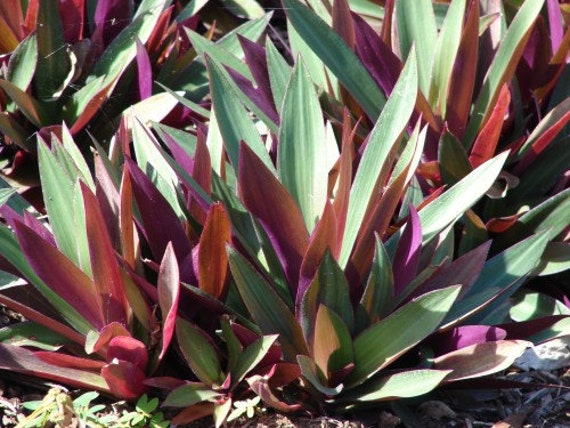
Oyster Plant (Tradescantia Spathacea) Moses-in-the-cradle
Lot of 5 Live Plants
We are a *Certified Licensed Nursery in South Florida*
Moses-in-the-cradle, also known as oyster plant, Moses-in-a-boat or Moses-in-the-bullrushes, is an herbaceous perennial with a dense, spreading growth habit.
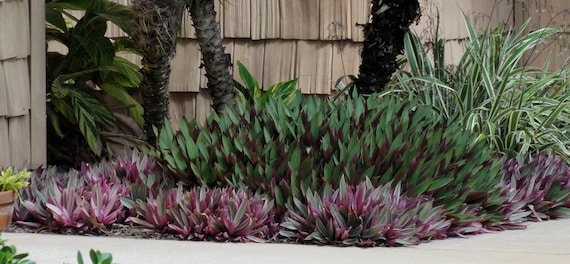
Gardeners value the plant for its attractive, sword-shaped, green leaves with glossy, purple undersides, and its ease of care. Moses-in-the-cradle reaches up to 12 inches in height and also thrives indoors with only minimal maintenance.
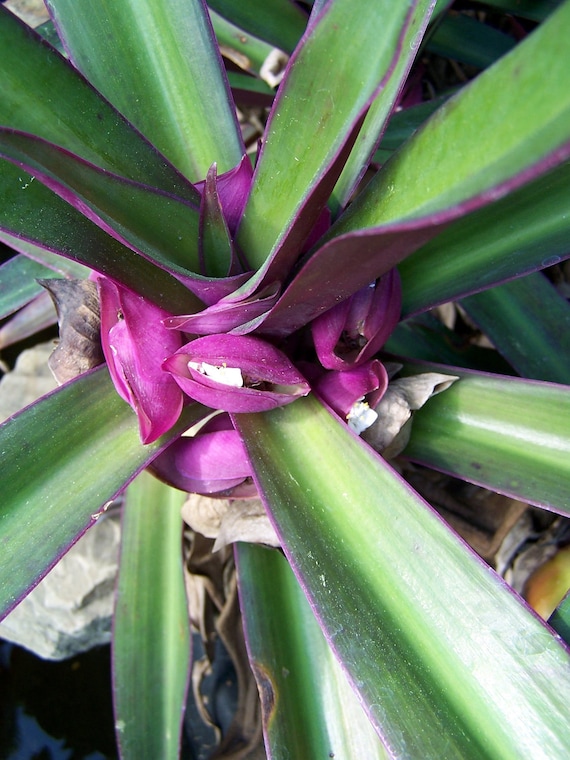
Native to Central America and hardy in USDA zones 9 through 12, the plant cannot tolerate cold temperatures and is typically grown as a houseplant in most of the United States.
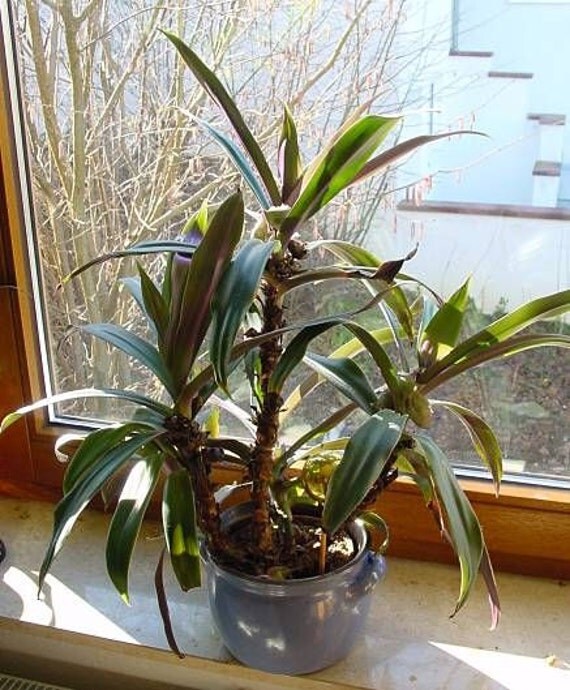
artVine Nursery South Florida
Saturday, May 4, 2013
The Cactus Plant
About Us & Delivery
We are a husband and
wife small business with a Certified Licensed Nursery in South Florida.
We Specialize in Prickly Pear Cactus Plants. A member of the Cactaceae
family, other names include Opunitia Ficus-Indica or Mexican Nopales.
|
Cactus Pads or Paddles
arrive bare-root (without soil and pot). Plant it straight into the
ground or in a pot. Cactus likes sunny areas with minimal water. When
handling Cacti, always use garden gloves to avoid glochids (prickly
hairs).
|
CACTUS CLEARANCE SPECIALS
Order Here
ODD CACTUS SHAPES
Order Here
LARGER PADDLE OFFERINGS
Order Here
FREE SHIPPING
Orders are shipped out next business day by USPS and arrive in 3-5 business days within continental US. We ship to AK, HI, PR and International - Additional shipping charge will apply. Faster delivery options are also available upon request and will require additional cost.Easy to Grow and Maintain
Hardiness:
The prickly pear is hardy to 15F and can withstand temperatures well
above 100F, as it is adapted to desert conditions. Sunset Zones: 8,9,
12-24 , H2 USDA: 8b-10
It is an exceedingly easy plant to grow, and requires almost no water once established. Grow in full sun.
SHAPE & SIZE VARIES. Bears pink flowers and fruit.
It is an exceedingly easy plant to grow, and requires almost no water once established. Grow in full sun.
SHAPE & SIZE VARIES. Bears pink flowers and fruit.
Our Online Nursery Locations
Happy Gardening!
WE ARE A CERTIFIED LICENSED NURSERY
IN SOUTH FLORIDA
Contact Us
Thursday, May 2, 2013
Cuban Oregano - One Live Branch FLORIDA FRESHNESS Aromatic, Decorative, and Ornamental, Very Easy to Grow
Cuban Oregano
Fresh From Florida !!
We are a Certified Nursery
~Our specialty is Cuban Oregano~

Common names: Indian Borage, Spanish or Broadleaf thyme
(Coleus ambionicus or Plectranthus amboinicus)
One 9 inch cutting of Cuban Oregano - An unbelievably fragrant plant, easy to grow, low-growing herb with succulent, broad leaves and a soft, velvety texture. The plant is a tropical perennial and will not survive a cold winter outdoors.
Propagates quickly, the beautiful leaves are decorative and aromatic, a lovely addition to your garden.
Cuban Oregano likes sunny or partly sunny locations and requires regular watering (avoid over-watering).
Transplanting and Care instructions will also be included.
Visit our store for more Freshnee:
http://www.etsy.com/shop/artVine
According to "The Herbalist in the Kitchen"...
"Culinary Uses
The fresh leaves are used to season fish and cabrito (young goat) in the islands. They are sometimes chopped in chile pastes (something like Jerk Seasoning, but without the strong Onion and Ginger presence). The leaves are the primary seasoning in the Cuban black bean soup, Frijoles Negros. A kind of salsa, made by mincing the leaves together with various unripe fruits, is served as an accompaniment to rice.
In Java and Malaysia, it is used in curries -- especially with goat or strong-smelling fish.
The leaves are sometimes used to flavor beers and wines in India. They have been brewed as herbal tea, and been cooked as potherbs.
Roots and young plants (Coleus amboinicus) eaten in South America. The fragrant leaves are eaten as potherbs in India
The roots of Coleus barbatus are pickled in India."
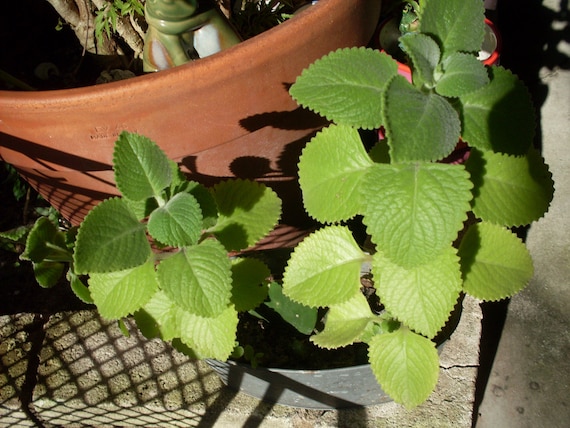
artVine Nursery South Florida
Lemongrass Plant 1 Quality STALK with roots Cymbopogon Citratus FLORIDA FRESHNESS Fever Tea Oil Cuisine Fevergrass Capim
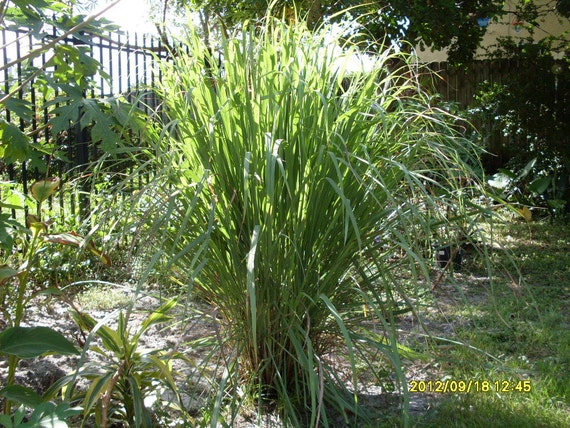
Lemongrass Plant - One Quality Stalk
Fresh From Florida !!!
We are a *Certified Nursery*
Our Specialty is Lemongrass
Arrives bare root (no soil or pot)
Please inquire about also purchasing pot and/or soil.
COMMON NAMES:
Lemongrass, Achara, Citronella, Capim, Fever Tea, Oil Grass, Fever Grass
LATIN NAME:
Cymbopogon citratusis
Easy to grow and maintain and it's also a mosquito repellent.
Healthy stalk of Lemongrass. The length of lemongrass from the ground to the tip is about 42 inches (leaves will be cut for shipping) and will have 1-2 inches of root. It grows beautifully in a sunny location and can also grow in the shade. Water regularly until new leaves start to form.
Instructions on Easy Planting and How to Care for Lemongrass will be included. It will require attention upon arrival and may go through transplant shock, but it will grow back.
Very exotic, edible and decorative!
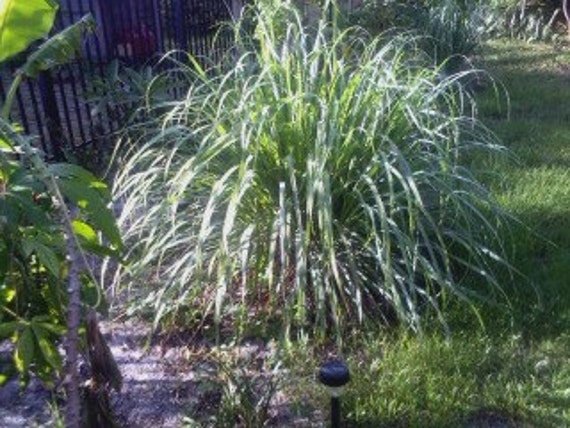
Lemongrass belong to grass family poaceae. It is a tall perennial grass that is grown in Southeast Asia and Sri Lanka. Lemongrass also known as Citronella Grass or Fever Grass is a tall perennial grass belonging to the Africa and Old Eurasian countries. It is a widely used herb in Asian (particularly Thai, Lao, Khmer and Vietnamese and Caribbean) cooking. The grass has a lemony flavour.
Indian Name: Bhustrina
Botanical Name: Cymbopogon
Family Name: Poaceae
Parts Used: Leaves
Habitat: Africs-Eurasia
Uses of Lemongrass
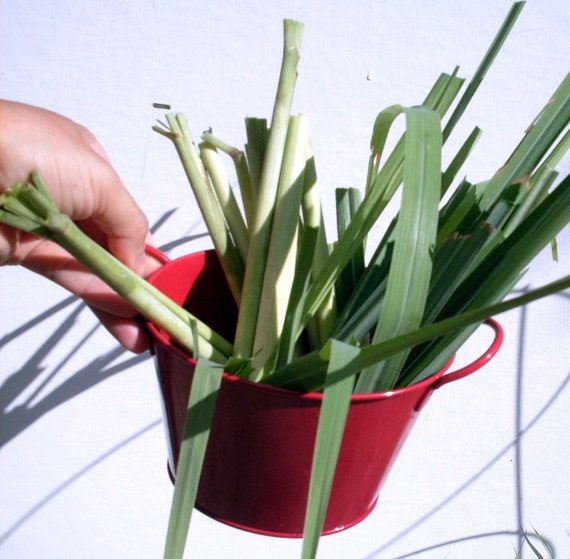
Culinary Uses
Lemongrass spice is very pungent and can be used in varieties of recipes. The grass can be chopped into small pieces and can be used in soups. The grass has mild flavor of lemon hence they can be used successfully with garlic, chilies, and cilantro. Lemongrass spice is mainly used in Indian. Indonesian, Malaysian and Srilankan cuisine. In these countries especially, lemongrass spice is used for cooking savoury dishes and meat, poultry, seafood and vegetable curries. It is also used in teas, pickles and for flavoring marinades.
Medicinal Uses
Lemongrass also posses some medicinal benefits. Lemon grass it is said provides relief in following Health problems:
Aids in digestion
Relieve spasms
Muscle cramps
Rheumatism
Headaches
Nausea
Visit our shop for more Freshness!!! Cactus, Cuban Oregano and more!
artvine.etsy.com
Wednesday, May 1, 2013
Miniature Prickly Pear Cactus Plants
Lot of 5 Mini Opuntia Ficus-Indica Mexican Nopales Spring Cactaceae
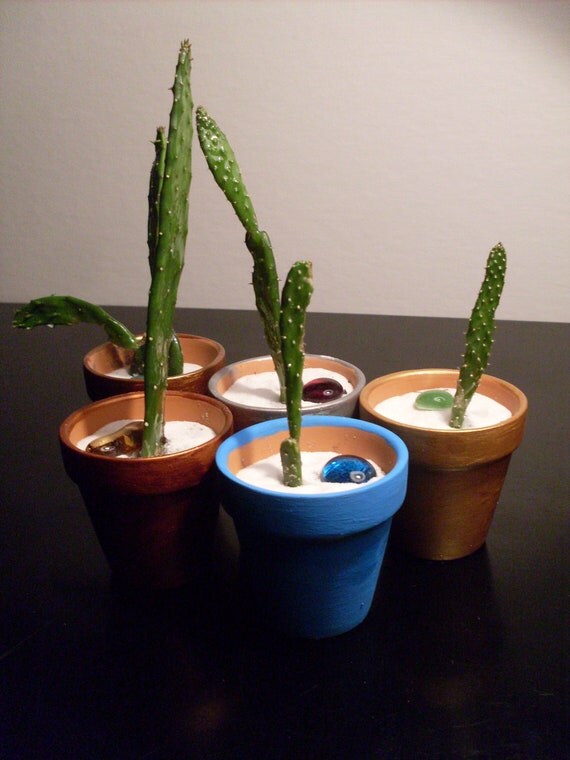
Miniature Prickly Pear Cactus Plants Lot of 5
Arrives bareroot - without soil and pot. Plant it straight into the ground or in a pot. Cactus likes sunny areas with minimal water. When handling Cacti, always use garden gloves to avoid glochids (prickly hairs).
Other names: Opuntia Ficus-Indica, Mexican Nopales, Cactaceae
***DOES NOT Include:
Hand Painted terracotta Pot (your chosen color) - 2 1/2 inches high and wide
Colorful Stones - 5 pieces
White Sand
Soil
***Please send a convo if you are interested in ordering these items at additional cost and we can create a custom order for you.
SHAPES & SIZES VARIES
Decorative, fun, and a great little gift idea!
Opuntia Ficus-Indica
Description: Bushy cactus to 10-15ft. Most varieties are spineless, all are near spineless but do contain small sticky hairs called glochids which may fall off when the fruit is ripe, but care should be taken when handling.
Hardiness: The prickly pear is hardy to 15F and can withstand temperatures well above 100F, as it is adapted to desert conditions. Sunset Zones: 8,9, 12-24 , H2 USDA: 8b-10
Growing Environment: It is an exceedingly easy plant to grow and requires almost no water once established. Grow in full sun.
Propagation: By seed or by stem cuttings.
Native Range: Native to Mexico. Has naturalized throughout the Americas, including portions of Southern California and Arizona.
Fresh From Florida Certified Licensed Nursery
Thanks for visiting: artvine.etsy.com
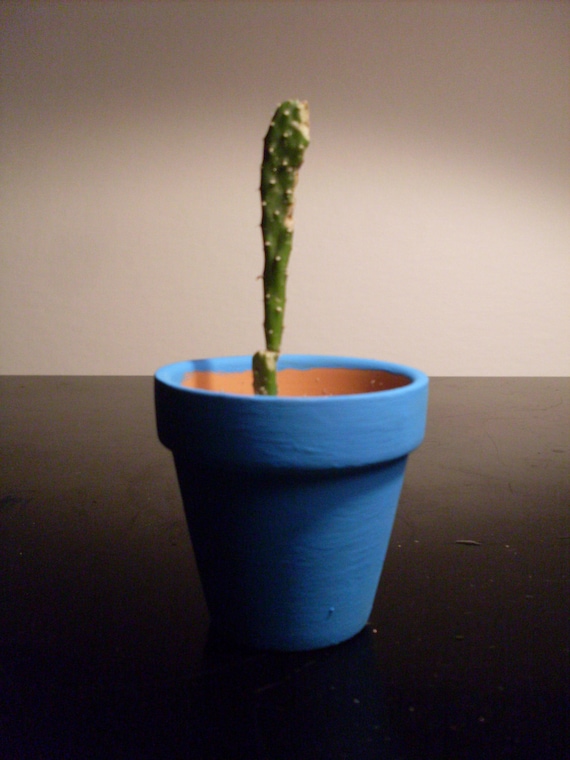

Miniature Prickly Pear Cactus Plants Lot of 5
Arrives bareroot - without soil and pot. Plant it straight into the ground or in a pot. Cactus likes sunny areas with minimal water. When handling Cacti, always use garden gloves to avoid glochids (prickly hairs).
Other names: Opuntia Ficus-Indica, Mexican Nopales, Cactaceae
***DOES NOT Include:
Hand Painted terracotta Pot (your chosen color) - 2 1/2 inches high and wide
Colorful Stones - 5 pieces
White Sand
Soil
***Please send a convo if you are interested in ordering these items at additional cost and we can create a custom order for you.
SHAPES & SIZES VARIES
Decorative, fun, and a great little gift idea!
Opuntia Ficus-Indica
Description: Bushy cactus to 10-15ft. Most varieties are spineless, all are near spineless but do contain small sticky hairs called glochids which may fall off when the fruit is ripe, but care should be taken when handling.
Hardiness: The prickly pear is hardy to 15F and can withstand temperatures well above 100F, as it is adapted to desert conditions. Sunset Zones: 8,9, 12-24 , H2 USDA: 8b-10
Growing Environment: It is an exceedingly easy plant to grow and requires almost no water once established. Grow in full sun.
Propagation: By seed or by stem cuttings.
Native Range: Native to Mexico. Has naturalized throughout the Americas, including portions of Southern California and Arizona.
Fresh From Florida Certified Licensed Nursery
Thanks for visiting: artvine.etsy.com

Subscribe to:
Posts (Atom)
